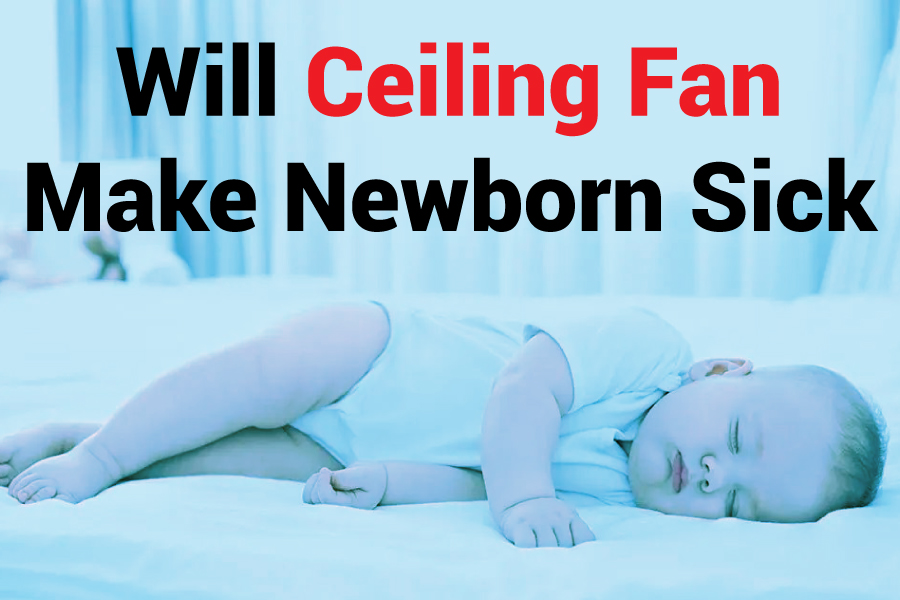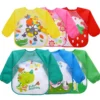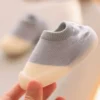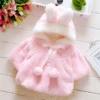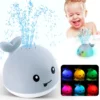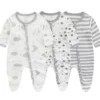New parents are always confused about their baby’s health and safety. One of the common questions running in everyone’s mind is “Can a ceiling fan make a newborn ill? With temperatures soaring and the circulation of air of paramount interest, many a parent would wonder if a ceiling fan is safe or would affect the health of an infant. This piece seeks to answer this question by taking a critical look at exactly how ceiling fans could impact newborns, precautions parents should take, and how safety and comfort can be ensured for the baby. Parents, therefore, can make an informed decision concerning the ceiling fan in the baby’s room upon understanding the risks and benefits associated.
Can A Ceiling Fan Make A Newborn Sick?
A ceiling fan in proximity to a newborn will normally not lead to illness as long as it is used correctly. Just remember that the speed of the fan should be low, the temperature in the room should be comfortable, and a baby should not be exposed directly to drafts. If the fan is free of dust, there will be no danger of infectious diseases from aero dispersion. These tips will ensure the safety and comfort of your newborn with the help of a ceiling fan.
How Ceiling Fans Affect Newborns?
They can be found in almost every household, mostly in warmer climates that circulate air to sustain the temperature in the room. For new parents, however, using ceiling fans can be considered a cause for concern. Some worry that the constant air movement from them could lead to respiratory issues or even increase one’s chances of getting a cold. It’s important to differentiate between myths and facts when addressing these concerns.
The major role of a ceiling fan is to circulate air around the room for cooling. This could, therefore, have some effect on a newborn since its body cannot regulate temperature effectively compared to an adult. In so doing, ceiling fans will prevent overheating, which is one of the major risk factors of SIDS. Be cautious not to direct the fan towards the baby’s body, as this may make your child uncomfortable and even ill.
The ceiling fans cannot simply be put on, as they blow dust and other allergies away from the ceiling fan blades. If not cleaned regularly, the fans will whirl up a storm of dust and allergens that could irritate the sensitive respiratory system of a newborn baby. One can reduce this risk by cleaning the ceiling fan regularly. It will also prevent the blowing of a lot of air in the face by setting the fan on low or medium.
The humidity level in the area will also decide how much the ceiling fan is going to impact the newborn. In highly humid conditions, fans aid in sweat evaporation and help in cooling the infant. However, it may dry out the skin of the baby and the nasal tracts under very dry conditions. A balanced environment can be maintained by using a humidifier along with the ceiling fan.
Parents should also be informed about the temperature of the room. The best temperature recommended in a newborn’s room should fall within 68 to 72 degrees Fahrenheit (20-22 degrees). A ceiling fan can help cool a room under this aforementioned Fahrenheit range, provided it is not too extreme, and to avoid overcooling or overheating the baby while sleeping, it must be monitored continuously. Having an adjustable speed setting on your fan can help out in getting control over the airflow and temperature.
Ultimately, everything boils down to moderation and proper maintenance of a newborn. Keeping the fan clean, setting it at an appropriate speed, and ensuring that air from it does not blow directly on the baby are some of how the parents could accrue the benefits of air circulation without risks of compromising the health of their newborn.
Key Considerations For Using Ceiling Fans With Newborns
- Keeping Room Temperature Optimally: A ceiling fan can be used to maintain room temperature. Neonates do not like rooms that are either too hot or too cold. A ceiling fan will provide an element of cooling for a neonate in warm weather conditions, although it would have to be regulated to ensure room temperatures do not go below the recommended range. A thermometer in the baby’s room will allow him or her to monitor the temperature and adjust the fan speed accordingly.
- Proper Airflow: Proper airflow is necessary for keeping a newborn baby very comfortable. In improving the airflow, caution should be taken since straight air from the ceiling fan might blow directly into the baby. Direct drafts may cause discomfort or respiratory problems. Positioning the crib away from the direct path of the fan, and setting it at a lower speed, can help create gentle indirect airflow that shall be very beneficial to the baby without harm.
- The need for regular cleaning and maintenance: Some dust settles on ceiling fan blades thereby reducing the air quality. The fanning of dust or any other allergen by the whirring of the fan blades is the last thing one wants for a newborn whose respiratory system can easily get irritated. On this note, parents are encouraged to clean the fan at least once every month using a damp cloth or a vacuum cleaner with suction that allows for a brush attachment. Ensuring the fan stays clean and well maintained opens some probability toward a healthier environment for the baby.
- Pick the Right Speed for Your Fan: The speed should be such that the baby is comfortable. Low to medium should be good enough to give a soft presence of air. Very high speeds may be great, but they can often cause drafts that are not so baby-skin-friendly. Adjustable speed settings make it possible for parents to control the amount of air depending on the room temperature and the comfort of the baby.
Practical Tips For Safe Ceiling Fan Use
It could be very safe to use a ceiling fan with a new baby, as well as quite useful if practiced correctly. The following are some practical tips that help a baby stay comfortable and safe:
- Carefully Place the Crib: Place the crib in an area where the airflow from the fan will not blow directly on the baby. Position the crib in the room against the wall or a corner so that no wind blows directly over the crib.
- Setting a Thermometer: Keep a thermometer in the baby’s room to monitor the temperature. Reduce the fan speed or set up any other cooling or heating device to make the temperature comfortable.
- Periodic Cleaning of the Fan: Dust the fan blades and housing at least once a month to prevent accumulation of dust. A damp cloth or vacuum cleaner with a brush attachment
- Use in Combination with a Humidifier: Run the humidifier during dry periods to keep up the proper level of humidity. Place the humidifier and the fan to offset each other so that neither moisture nor dry air overpowers the other.
- Fan Speed Adjustment: Change the speed setting on the fan to change the wind speed. Keep it on low and turn it higher only when necessary to not have drafts.
Alternative Points Of View On The Issue Of Ceiling Fan Use
Almost every parent has ceiling fans in their homes to create a comfort level by circulating an adequate or comfortable amount of air. But some parents may feel awkward when they think about ceiling fans in the presence of a newborn baby. In this case, awareness of their concerns will help the parents to have an alternative point of view and make a conscious decision.
People fear that they can, in some manner, cause respiratory problems in newborns. The respiratory system in newborns is quite sensitive and may get irritated by the presence of dust and allergens. When the ceiling fan above is not cleaned regularly, it circulates dust particles in the air, which, in the long run, could be catastrophic to the respiratory system. Thus, parents have to ensure that they clean and service the fan regularly.
One such risk is overcooling. Although ceiling fans can prevent overheating, their strong cooling effect may not be suitable for a newborn baby. Parents should assume responsibility for controlling the temperature in the room and adjusting the fan speed so that the temperature is maintained within the comfort zone. This way, cooling devices will function in conjunction with heating devices to balance out the temperature.
Some other parents still prefer other modes of air circulation, such as portable fans or air purifiers with a mild air stream. This could only achieve LOCALISED air movement with a void of the DRAUGHT OK INSTALLATION that ceiling fans create. Alternatively, the use of air purifiers will enhance air quality by removing dust and allergens in the air, creating a more conducive environment for the bay.
Summary
Running a ceiling fan near a newborn is safe and effective if undertaken with due caution. Maintaining appropriate room temperature, gentle airflow, and regular cleaning of the fan are some of the ways parents can ensure their baby is in a healthy environment. Monitoring moisture levels by adding extra equipment such as humidifiers adds constantly to comfort. Using it often and taking care, in other words, a ceiling fan can be a good assistant in this matter, keeping newborns comfortable and safe.
FAQ’s
Can A Ceiling Fan Help In Creating Respiratory Problems For Infants?
The point to be noted here is the accumulation of dust in the fan due to a lack of cleaning. If this point is avoided, there will not be an increased tendency to suffer from respiratory problems.
Is It Safe To Install A Ceiling Fan In A Newborn Baby’s Room?
Yes, it is. Still, proper precautionary measures must be taken, such as keeping the temperature comfortable and the wind at low speed.
How Often Should I Clean My Baby’s Ceiling Fan?
Clean the fan once a month to prevent dust accumulation and ensure excellent air quality.
At What Room Temperature Is It Recommended For A Newborn?
The recommendation for a room temperature range for a newborn is from 68-72 degrees Fahrenheit or 20 – 22 degrees Celsius.
Should I Run A Humidifier Along With The Ceiling Fan?
The humidifier should help balance the humidity so that dryness does not occur due to the blowing of air from the fan.
